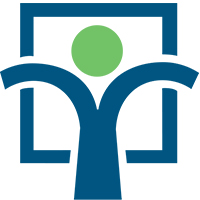
The Feb. 29 deadline for 2011's RRSP contribution is fast approaching and if you are like a number of Canadians, you may well be procrastinating. It seems that when it comes to contributing to RRSPs, Canadians' intentions are far better than their actions.
Take, for example, a recent survey of 1,520 Canadians 18 years of age and older conducted this past November on behalf of BMO Financial Group. Of the respondents, 69% said they would be contributing the same amount or more to their RRSPs in 2011 as they did in 2010.
Yet, a recent Statistics Canada release shows less than one in four Canadians contributed to his or her RRSP in 2010. In fact, although 93% of taxfilers were eligible to contribute, only 26% of those who were eligible did. In reality, slightly less than six million Canadians made contributions in 2010. (Data is based on tax returns filed for 2010.)
Either those Canadians surveyed in November were feeling optimistic about future contributions or they were being ironic: they contributed nothing last year and they intend to contribute nothing in 2011.
Those who did contribute in 2010 put a total amount of $33.9 billion into RRSPs, a 2.6% increase from the amount contributed in 2009. But that $33.9 billion still represents only 5.1% of the total room available to eligible taxfilers. In fact, says StatsCan, the median contribution was $2,790, that is half of the tax filers contributed more than $2,790 and half less. Either way, that is a long way from the $22,000 maximum for 2010.
This year, the maximum contribution is $22,450. To contribute, you must have qualifying income from 2011 (generally employment income which includes income from self-employment) or unused room from earlier years. The limit is based on 18% of the previous tax year's earned income to that maximum, less any pension adjustments, plus any unused room carried forward.
(You can find your RRSP contribution room for 2011 by going to your latest notice of assessment, or reassessment, from Canada Revenue Agency. Or you can open "My Accountî on the CRA website, which gives you online access to your tax information.)
Of the respondents to the BMO survey who are not contributing or are contributing less this year, 38% cited other expenses and 20% said they don't have the money.
Yet, the BMO survey found, 61% of Canadian have an RRSP even if they don't make regular contributions. But it is mostly older Canadians putting money into RRSPs: 62% of respondents aged 18-34 said they have not yet opened an RRSP.
That is consistent with StatsCan's findings. In 2010, the average age of contributors was 45. Of the almost six million taxfilers making contributions in 2010, 30% were in the 45-54 age category. The 35-44 age group accounted for 24%, while the 55-64 age group added another 21%. The under-35s accounted for 22% of contributors ó still slightly ahead of the 55-64 age group, who, you might assume, would be more motivated to save.
Geographically, looking at median contributions in 2010, Canadians in the north and west were the largest contributors to RRSPs in 2010. Nunavut's median contribution was $4,100, Northwest Territories' was $3,610, Yukon's was $3,310. But as might be expected, the number of contributors was smaller in those areas. Ontario and Quebec had the greatest number of contributors, 2.2 million and 1.5 million, respectively, but were in the lower half for median contributions, $2,880 and $2,530, respectively.
So, stop procrastinating and make your RRSP contribution. Don't forget the corresponding tax credit means your taxable income will be reduced by the amount of your contribution. The BMO survey also found one in three Canadians is not confident about his or her ability to save for retirement. The StatsCan numbers go a long way to explaining why.
Tessa Wilmott is a financial journalist and editor of the Knowledge Bureau Report.
Additional Educational Resources: Tax Efficient Retirement Income Planning and Master Your Retirement, 2012 Edition.


